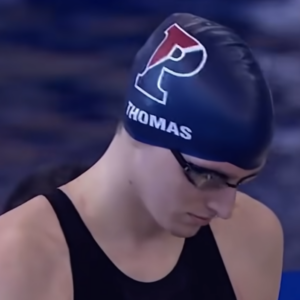For an alternate viewpoint, see “Point: Biological Males Competing Against Females Is a Farce.”
2024 might be the year of women’s sports. Incredible stories of women competing abound — from Caitlin Clark and Angel Reese catapulting women’s basketball into the spotlight to Olympians Simone Biles and Katie Ledecky breaking records in Paris. With the uptick in exposure to women’s sports, some are returning to the question about where transgender athletes fit in the picture.
Proponents of trans-exclusionary sports policies argue that the government should step in to ban transgender athletes from competing. These bans would create a new and significant government overreach, especially when the vast majority of sports aren’t played at the Olympic level. Really, these policies would most affect people like students playing on teams with their friends, youth in after-school programs, and those playing club sports in public parks on summer weekends.
Trans-exclusionary sports bans, like the one passed in Idaho, could require youth athletes to undergo genital inspections if their gender is “challenged.” It’s not hard to see how these policies could be weaponized against cisgender athletes, too.
Already, it’s become far too common for pundits, social media influencers, and even parents of athletes to claim cisgender women must be secretly transgender because of their athletic successes. These outcomes make clear that it’s not just transgender people who are harmed by these policies — cisgender women suffer, too.
Supporters of these trans-exclusionary policies will compare men’s running and swimming times with women’s, but these types of arguments rely on deeply faulty logic. It’s important to remember that when transgender women compete in women’s sports, they must meet strict medical qualifications to be there, such as being on hormone replacement therapy for an extended period of time. When transgender people take hormones, their bodies change. Transgender women, for example, lose muscle mass and strength after sustained hormone replacement therapy, according to multiple studies. This is why it’s incredibly inaccurate to use men’s sports times and results when discussing trans women athletes. Trans-inclusive sports policies are not allowing men to compete with women — they’re allowing women to compete with women. Trans women are women.
Additionally, this is why inflammatory anecdotes about trans women injuring cisgender athletes are misrepresentative of the facts. It’s impossible to claim sports injuries are due to the presence of transgender women because sports injuries happen whether transgender women are there or not — especially in contact sports.
After meeting strict requirements — like maintaining a suppressed level of testosterone — transgender women can be allowed to compete in professional and elite sports like the NWSL, the Olympics and more. The requirements trans athletes must meet to participate often aren’t perfect; cisgender women have been barred from competing in the Olympics due to unexpected test results, like naturally high testosterone levels. This phenomenon is a key example of how defining gender isn’t as simple as many would think.
Trans women also make up an extremely small percentage of female athletes. When vetoing a ban on trans girls in school athletics, Gov. Spencer Cox, a Republican, noted that just one trans athlete was competing in girls’ sports at the time in the entire state of Utah. Even though the NWSL allows trans athletes to compete, only one out non-binary player is on an active NWSL roster. If trans women have such an obvious advantage in sports, why would sports leagues that allow them not be full of trans players?
Equality is an issue in women’s sports, but transgender women aren’t the reason. Women’s sports are underfunded and under-resourced. If we want to increase opportunities for women to excel athletically, the solution is not limiting participation to an already very small group of athletes who earned their right to be there just like everyone else. If we’re smart enough to focus on encouraging female athletes, funding their programs, and resourcing them appropriately — we can have many more years like 2024 ahead of us.





